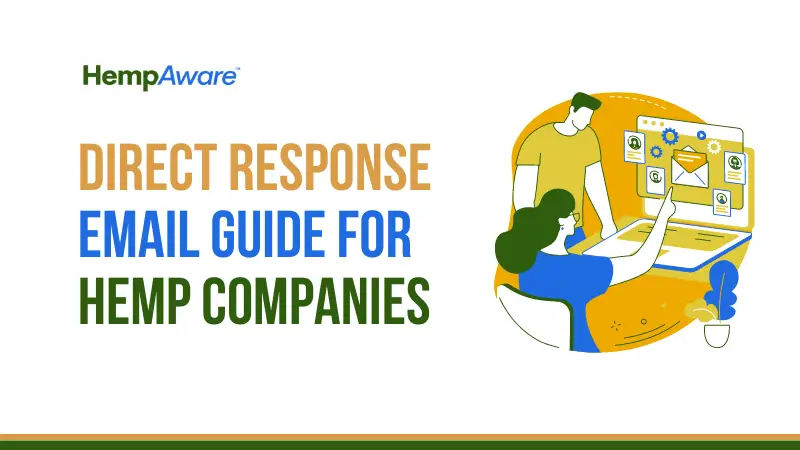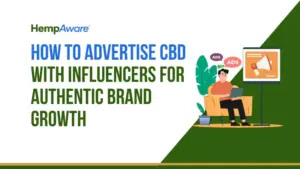Master the art of crafting emails that drive action by leveraging the five essential elements of direct response copywriting.
So, what exactly is a direct response email?
Direct response email grabs key aspects from direct response copywriting and seamlessly incorporates them into email marketing.
The aim of this outreach is to motivate the recipient to take action, whether it’s scheduling an introductory call, exploring a product demo, subscribing to a newsletter, taking advantage of a free gift, etc.
To inspire action from your email recipient, ensure that your email incorporates the five essential elements of direct response copywriting. These elements are strategically designed to guide the recipient through the email, beginning with the impactful “from” line.
1. The “From” Line
The “from” line is like the first impression your email makes in the recipient’s inbox.
It’s there to build a bridge of trust between the sender and the reader.
Get creative with your “from” line. While Hempleton is alright, it becomes more personal and transparent when it’s changed to Chris from The Hemp Company.
Once the recipient trusts the sender, they’ll feel more confident that the email’s content will be worth their while.
With that trust in place, they’ll be more inclined to open your email and dive into the next element.
2. The Email Subject Line
Following the “from” line is the email subject line, which plays a crucial role in persuading the recipient to open the email. Because, let’s face it, the email’s content is as good as non-existent if you can’t entice someone to click on it.
Inject some flair into your subject line and sprinkle a dash of urgency to grab their attention.
Check out this example:
Want to hop on a call?– While this subject line lacks urgency, this is common in marketing and sales emails.- I have a burning question for you and need a response by EOD – This subject line stands out for its uniqueness and prompts action by creating a sense of urgency and curiosity. The recipient will be eager to open the email to uncover what’s so important and why it needs a quick response.
Remember, it’s crucial to test your email subject lines, especially in direct response campaigns.
Testing will provide valuable insights into what resonates with your audience and what may need some adjustments.
3. The “Hook” Copy
The “hook” is the first thing that catches the recipient’s eye when they open your email. Its main goal is to spark curiosity and prevent recipients from immediately closing the email.
Take a leap, be unexpected, and be open to trying out different hook copies. Avoid generic “How is your day going?” hooks as they don’t pique interest or offer value to the recipient.
Instead, ask yourself, “What can grab the recipient’s attention enough to make them want to read further?” What will keep them engaged? What will leave them wanting more? Asking questions is a tried-and-true technique in copywriting.
Our minds are naturally drawn to questions because we crave answers.
With a hook like “Imagine having exclusive access to 28 pages of data that could supercharge your deal-closing abilities,” you’re more likely to hold their interest and keep them intrigued.
This sets the stage for the core message of your email outreach.
4. The “Body” Copy
Once you’ve hooked the reader, it’s time to dive into the body of your email. This is where you turn their interest into a burning desire.
Be specific in your copywriting here.
The more details you provide, the more precise the recipient’s understanding of your offer will be.
For example, “Imagine the impact of our data on businesses – in just two weeks, they closed 153 more deals than usual, with 22% exceeding their quarterly sales goals.”
Wouldn’t you be intrigued to learn more about this offer?
And to add a sense of urgency, consider mentioning that this exclusive opportunity is limited to just 50 more prospects by the end of the week.
5. The “CTA” Copy
At this stage of the email, the recipient has a choice: either take up your offer or simply move on. A strong call-to-action (CTA) can make all the difference.
The most effective CTAs are engaging and paint a picture of the benefits the recipient will enjoy by accepting your offer. One technique in copywriting to achieve this is through “future pacing.”
By using elements from our hook and body copy, we can incorporate future pacing into the CTA. For example, “Picture yourself using our data to achieve your sales targets quicker and more efficiently this quarter.”
The word “picture” sets the stage for a brighter future for the email recipient.
The conclusion of the CTA should convey that while your offer is compelling, there is no pressure to make a decision right away.
Using phrases like “take your time to review this before getting back to me” reminds the reader that the decision lies in their hands.
People don’t appreciate being pressured into making a purchase, so your CTA should be anything but pushy.
It’s also recommended to summarize your offer, value proposition, and CTA in the postscript in just one or two sentences.
This way, even if the recipient quickly scans through the email, they’ll still understand why you reached out to them.
Using direct response email for your next campaign
Now that you know how to write a direct response email that is urgent, compelling, and sparks curiosity, you can apply the same formula for your next outreach campaign.
Now, let’s look at everything put together that was mentioned above as an example.
From: Chris from The Hemp Company
Subject: I have something vital to ask you and need a reply by EOD
Body: In just two weeks since compiling and packaging our data, hemp businesses using it have closed 153 more deals than average, and 22 percent of those businesses have already surpassed their quarterly sales goals.
Follow-up line: That said, we can only extend this offer to 50 more prospects – and we’ll reach that limit by the end of this week…
CTA: Imagine using our data to meet your sales numbers faster and more efficiently this quarter. Secure your spot HERE now!
To your success,
Chris Hempelton
The Hemp Company
P.S. We can only extend this offer to 50 more prospects – and we’ll reach that limit by the end of this week. Simply click HERE to secure your spot now!





